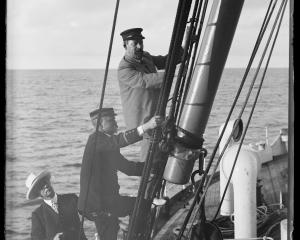
The ground will shake strongly, or the tsunami sirens will begin their banshee wail, at the most inconvenient time.
The forces which have shaped New Zealand and made our country such a jewel are also our downfall. As well as extreme weather events, the earth below us and the seas around us determine where and how we live, and how safe our lives are.
For this reason, a dedicated geohazards monitoring centre, as currently operates from GNS Science’s Hutt Valley headquarters, is a no-brainer.
If we were ever in doubt about just how perilous life on these islands can be, a Lloyd’s of London study in 2018 ranked New Zealand as the second-riskiest country regarding natural disasters, putting us just behind Bangladesh.
A more recent report from Intersec placed Aotearoa ninth on its disaster impact index of countries between 2000 and 2024.
While New Zealand’s death toll and number of injuries in that period was much lower than in many other countries, the economic damage caused by disasters here was extremely high per capita, at a total of $US35.45 billion. The February 2011 Christchurch earthquake, the November 2016 Kaikōura quake and Cyclone Gabrielle in February 2023 accounted for much of that.
War and pandemics, solar flares and high-impact events from outer space would clearly have huge effects on New Zealand. But we face our biggest threats from our location on the Pacific Ring of Fire.
The expected magnitude 8-plus earthquake which will be generated by a large rupture along the Alpine Fault poses arguably the highest-profile risk to life and livelihood in the South Island and along the West Coast.

The absolute worst-case scenario for New Zealanders would be a titanic megathrust earthquake along the Hikurangi subduction zone offshore of the North Island’s east coast. This could be akin to the devastating magnitude 9.0 Japanese quake and tsunami, and might result in tens of thousands of fatalities here.
It was concerns about tsunami which led, eventually, to the establishment of the National Geohazard Monitoring Centre. Now, after only six and a-half years in operation, the government’s funding cuts are threatening its ability to remain open on a 24-hour a day, seven-day a week basis.
Getting the last National government to support such a centre, or even the idea of one, was no easy task. After the Kaikōura quake — which caused a significant tsunami along parts of the Kaikōura coast and around the bays of Banks Peninsula — and following other tsunami-warning debacles, GeoNet director Ken Gledhill said New Zealand would be better off if it had a full-time monitoring system.
The then civil defence minister Gerry Brownlee took major umbrage to Dr Gledhill’s suggestion, saying it had blindsided him. But by the end of 2018, the GNS Science monitoring centre was up and running.
Unfortunately, science sector-wide changes, and a lack of funding, are now weighing heavily on the centre’s future. As Newsroom reported at the weekend, cuts at the Crown research institute, with 59 jobs axed, has also meant five analyst positions were disestablished in the centre.
The PSA is warning that the worse-case scenario is that the centre might be forced to close in the event of staff sickness or other absence. There will now only be teams of three to cover monitoring shifts and, under employment conditions, there have to be at least two on each shift.
Victoria University of Wellington’s Prof Ilan Noy, who has the chair in the economics of disasters and climate change, told Newsroom: "I have no doubt that if we were unlucky enough to experience a tsunami in our lifetime, a future Royal Commission of Inquiry will definitely find whoever defunded this monitoring centre as culpable."
This is an alarming situation. GNS Science is joining forces with MetService and Niwa to form a new public research organisation, with a joint hazards-forecasting centre which is meant to be more powerful than the sum of its parts.
Hamstringing the geoscience monitoring centre is a potentially alarming start to that excellent move.












